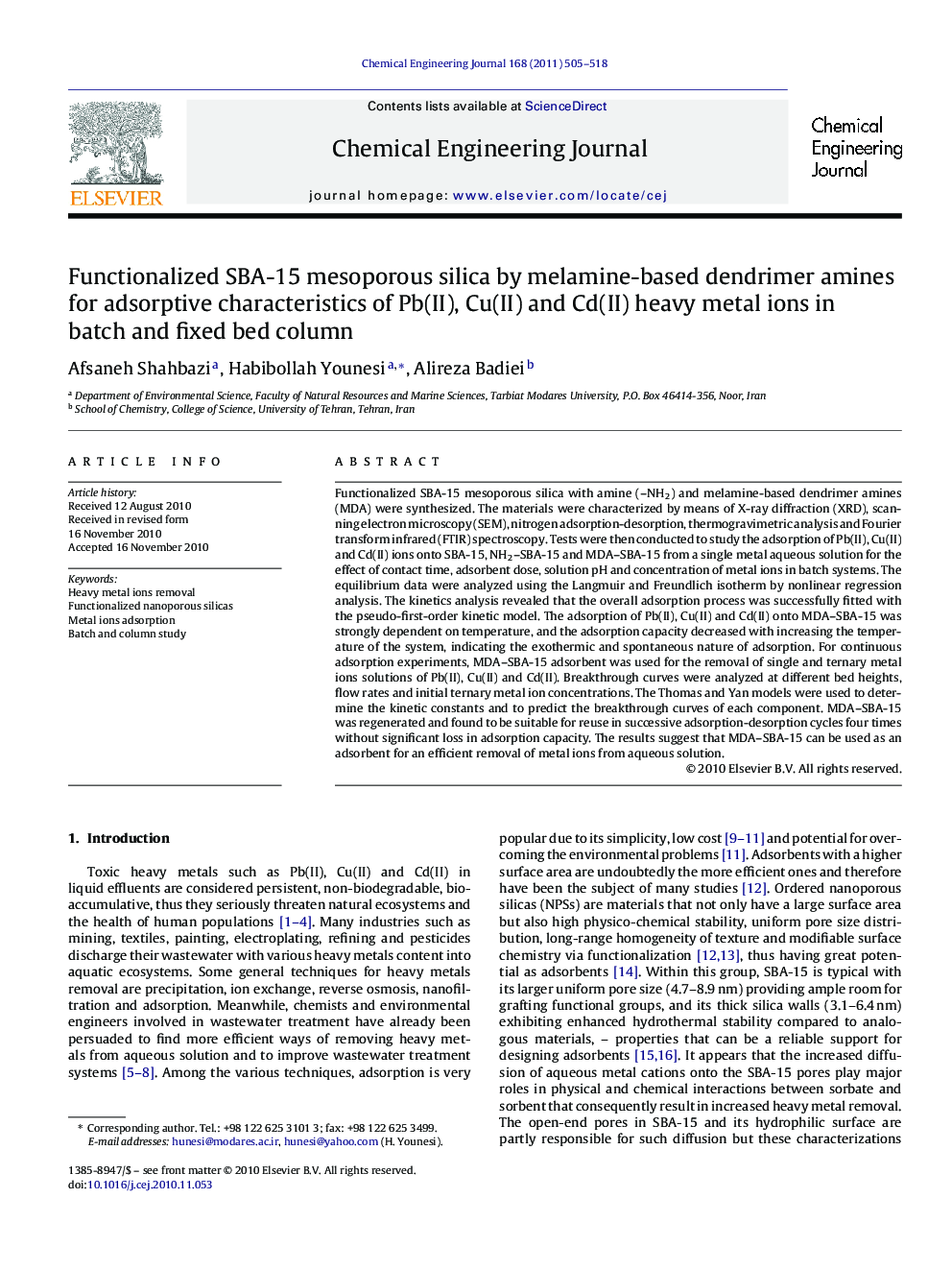| Article ID | Journal | Published Year | Pages | File Type |
|---|---|---|---|---|
| 151338 | Chemical Engineering Journal | 2011 | 14 Pages |
Functionalized SBA-15 mesoporous silica with amine (–NH2) and melamine-based dendrimer amines (MDA) were synthesized. The materials were characterized by means of X-ray diffraction (XRD), scanning electron microscopy (SEM), nitrogen adsorption-desorption, thermogravimetric analysis and Fourier transform infrared (FTIR) spectroscopy. Tests were then conducted to study the adsorption of Pb(II), Cu(II) and Cd(II) ions onto SBA-15, NH2–SBA-15 and MDA–SBA-15 from a single metal aqueous solution for the effect of contact time, adsorbent dose, solution pH and concentration of metal ions in batch systems. The equilibrium data were analyzed using the Langmuir and Freundlich isotherm by nonlinear regression analysis. The kinetics analysis revealed that the overall adsorption process was successfully fitted with the pseudo-first-order kinetic model. The adsorption of Pb(II), Cu(II) and Cd(II) onto MDA–SBA-15 was strongly dependent on temperature, and the adsorption capacity decreased with increasing the temperature of the system, indicating the exothermic and spontaneous nature of adsorption. For continuous adsorption experiments, MDA–SBA-15 adsorbent was used for the removal of single and ternary metal ions solutions of Pb(II), Cu(II) and Cd(II). Breakthrough curves were analyzed at different bed heights, flow rates and initial ternary metal ion concentrations. The Thomas and Yan models were used to determine the kinetic constants and to predict the breakthrough curves of each component. MDA–SBA-15 was regenerated and found to be suitable for reuse in successive adsorption-desorption cycles four times without significant loss in adsorption capacity. The results suggest that MDA–SBA-15 can be used as an adsorbent for an efficient removal of metal ions from aqueous solution.
